For Part 1 of this JLA/Avengers oral history, click here.
By KC Carlson
George Pérez: “I had been drawing for two weeks and was already starting page 21, when I received a call from Len Wein saying they needed to find out what changes I was making in the plot. (DC staffer) Joey Cavalieri had to do a piecemeal plot based on things I had changed — ideas, if not actual explanations — since I hadn’t quite worked out everything as I was going along yet.” — Comics Interview #6, August 1983
Gerry Conway, unwilling to do another draft of the plot, leaves the project at this point. Cavalieri, in consultation with Perez and Wein, cobbles together a new plot — draft #3 — and Giordano rushes it into Shooter’s hands.
May 20, 1983: In a letter to Giordano, Shooter rejects the new plot, stating that it is “substantively the same plot” and still “doesn’t make sense.” Shooter offers no specifics about his concerns.
May 26, 1983: Giordano sends Shooter a letter summing up DC’s version of the events-to-date. In excerpts reprinted in the Marvel Age article, Giordano takes the blame for giving Perez the go-ahead to start penciling before the plot was completely approved. Also covered: a statement indicating that if the project needed to be started over from scratch, the current creative team may be forced to withdraw due to previous commitments, a request for a “detailed, written list of changes requested” from Shooter, and an offhand comment which indicated that Giordano thought that Gruenwald — not Shooter — was Marvel’s editor on the project. However, in Giordano’s first “Meanwhile…” column on the topic, he claims that the Marvel Age article edited out substantial portions of his letter, including his apology for telling Pérez to begin work.
May 31, 1983: Shooter responds, correcting several of Giordano’s “impressions,” including that of Gruenwald’s actual role in the project, clarifying Shooter’s role in past crossovers, and reiterating that no plot had yet been approved by Shooter.
Roy Thomas: “I have had some contact with Mark Gruenwald to check out a few continuity things (while working on the revised plot), since Mark was the original Marvel editor who had approved, for the Marvel side, the basic plotline that Gerry did, only to have Shooter undercut him.” — Comics Interview #6, August 1983
Jim Shooter: “While he was never appointed ‘official consulting editor’ by us, Mark Gruenwald tells me that Len discussed very basic parameters with him and these are still okay by us. Mark insists that beyond fundamental ground rules, he never approved any plot. He is in complete agreement with me that the plots presented to us are unacceptable.” — Shooter letter to Giordano, May 31, 1983 (from Marvel Age #19)
June 15, 1983: Shooter sends Giordano a second letter, detailing his specific objections to the plot, per Giordano’s request. Giordano immediately sends Shooter’s list of concerns, the three previous versions of the plot, and copies of Pérez’s penciled pages to Roy Thomas. Although slated to dialogue the project, up to this point, Thomas has not actively been involved with its production. Giordano gives Thomas one week to “digest the material.”
June 23, 1983: Thomas and Giordano begin a series of phone conversations to work out the now-convoluted plot.
Roy Thomas: “When the plot was rejected, since Gerry didn’t want to work on it anymore, I agreed for a flat fee — in order to help Dick — to revamp the plot using most of the material George had already drawn, and to change the plot to try to take Shooter’s misgivings into account.” — Comics Interview #6, August 1983
Jim Shooter: “I’m not sure what went on at DC, but at one point Dick took me to lunch and asked that they be allowed to finish the book as originally plotted. Again, he cited DC’s internal political strife. His position was basically this: who cares if it’s wrong or bad, it’ll sell like crazy anyway. He confirmed those sentiments in a letter to me. Well, I cared if it was wrong or bad, and I insisted on corrections and a revised plot.” — Wizard #35, July 1994
July 13, 1983: Letter from Shooter to Giordano: “Still no plot. What gives?”
July 28, 1983: Roy Thomas delivers his completed plot to Dick Giordano. According to Giordano, a copy is hand-delivered to Shooter at the Marvel offices. DC receives no acknowledgment from Marvel regarding its receipt, but Giordano is unconcerned as both companies are deep in last-minute preparations for that year’s San Diego Comic Convention. Giordano later claims that this is the point where communications between the two companies really started to fray.
Roy Thomas: “We came up with a plot that I think had a few differences. Marv Wolfman, Len Wein, Dick, and other people who read this new plot seemed to think that it was considerably better. Or at least it dealt with Shooter’s objections — I mean, whether it’s better than Gerry’s, I don’t know.” — Comics Interview #6, August 1983
Tom DeFalco: “Mark and I discussed Roy’s reworked plot and basically came to the conclusion that Roy was a genius. He had managed to incorporate all of the artwork that had previously been drawn, followed the thrust of the original story, and answered all of Marvel’s concerns. We were in awe, and since we were both writers as well, a little jealous.”
August 1983: The Comic Reader #212: “The JLA/Avengers team-up has been removed from the schedule. Marvel has yet to approve a plot for the book.”
August 4-7, 1983: Shooter and Giordano meet at San Diego. According to Giordano, he asks Shooter if he’s read the plot. Shooter says no but indicates he has it with him and will try to read it during the Con. Giordano points out that it would be advantageous if he could, as the entire creative team was present at the convention and could work things out right there. However, the Marvel Age article indicates that Giordano hands Shooter Thomas’ revised plot (implying that this is the first time Shooter has seen it) and asks for “instant approval.”
Giordano denies asking for “instant approval,” and after attempting several unsuccessful attempts at getting together at the Con, he tells Shooter that if a new start date for Pérez isn’t determined by the end of August, they will lose Pérez due to other commitments. According to the Marvel Age article, Shooter states that he wants to get comments on the plot from Gruenwald and Avengers writer Roger Stern before he can comment on the plot. Unfortunately, nothing moves forward for almost two weeks, as most of the principals are “out of the office” during the busy convention season.
August 15, 1983: According to the Marvel Age article, Shooter returns to the office and finally reads Thomas’s revised plot. He gives a copy to Gruenwald (even though he was at the convention with Shooter) and sends a copy to Stern for comments.
Roger Stern: “I don’t remember ever getting a hard copy of the plot. Maybe it got lost in the mail — or in Marvel’s mailroom. That certainly wasn’t unheard of. Anyway, by the time I’d heard that there was a new plot, George was making noise about leaving the project.
“As late as things were by that time, the book should really have been rescheduled with a new plot, from scratch if necessary, so that George would have been able to draw it without any deadline hassles. And in a weird sort of way, that’s what eventually happened. It’s just too bad that it took so long.
“Of course, twenty years ago, Kurt (Busiek) wouldn’t have been ready to write the story. And now, George is an even better artist. Plus, the JLA/Avengers book now has more pages and much better printing, so maybe everything worked out for the best. What I find most unfortunate about the whole affair were the hard feelings that arose — mainly through miscommunication and misunderstanding.

“The attitude we got from DC in those days seemed to be that this was another one-shot book that would sell regardless of the story’s quality. Whereas Marvel saw the project as a showcase for both companies’ greatest super-heroes. A lot of readers would see this and — if it were well done — hey, maybe they’d want to read more JLA and Avengers stories. With George drawing it, we knew it would look good, but if the story were lacking, why would they want to buy any more? Ah, I don’t wanna read about those guys. They all suck! As the writer of the Avengers, that was another major concern of mine.” –2004 interview
Meanwhile, Giordano made frequent attempts to contact Shooter by phone during August to no avail. The one time he actually got through to Shooter, Giordano indicated “he (Shooter) didn’t think that this was such a long time, since DC had withheld approval of his Superman/Spider-Man plot for two months.” Earlier in the month, an unnamed Marvel staffer expressed dismay to Giordano at the length of time it was taking Marvel to inform DC. “It’s been approved… I don’t understand the delay,” said the staffer.
George Pérez: “He (Shooter) did make a statement to Dick Giordano that when Paul Levitz had to approve his plot for the Superman/Spider-Man story, the second one, that it took about three months for an approval to be made. Whatever Paul’s reason, whatever bitterness that may have caused Jim, whether it’s understandable or not, is beside the point. It’s just unprofessional to let that mar your judgment.” — Comics Interview #6, August 1983
Roy Thomas: “Several weeks later, Shooter was, for all I could see, just sort of avoiding comment on it. I mean, Dick would try to call, and various things, and on some days he couldn’t even get Shooter to come on the phone to discuss it. He would just say, “I need another few days.” I don’t know how long it takes Jim to read and comment on 17 pages of a stream-of-consciousness plot. And since I refused to work with him directly — I would work with him only through Dick — obviously I’m not in direct contact with him at all.” — Comics Interview #6, August 1983
August 23, 1983: George Pérez gives an interview to Comics Interview, expressing his frustration with the situation and especially with Shooter. Pérez also decides that the interview will include his announcement that he is quitting the project.
George Pérez: “The book was supposed to be out three months ago. Granted, the plot wasn’t approved the first time, but everything since then is because Marvel Comics — excuse me, Jim Shooter — has not done a single thing to help it along. He’s procrastinated, ignored it, and actually made it seem that DC was the one that was constantly dragging their feet. But we couldn’t make a single move without Jim exercising his power of accepting or rejecting. The fact that he wasn’t even making a decision was the thing that finally did it. I mean it was procrastination. A rejection, we could have accepted. But the idea that he has not even bothered to take the time to give us an answer was the thing that made me realize that I don’t trust him any more.
“I gave Jim every benefit of the doubt. I was the last person who was not willing to accept the fact that this was being done on some level other than a professional level. As editor-in-chief, it was his duty to get that thing edited and either accept it or refuse it as quickly as possible. He did not do it. And I have no confidence that he will do it. I can’t wait any more. It broke my heart. I had been looking forward to this assignment before I had even turned pro. It was a pipe dream, the idea that someday maybe the JLA and the Avengers could get together. I never thought it would happen. I lived for waking up to get started on those pages. It’s the most heartbreaking decision I’ve ever had to make. I regret making it, but I don’t trust Jim Shooter. I just don’t think that he wants this project done.” — Comics Interview #6, August 1983
Jim Shooter: “The first time I knew George was angry at me was when I read an interview in a fan magazine in which he unjustly condemned me. Why he didn’t simply call me and ask me what was going on amazes me to this day. George shouldn’t make presumptions about my motives.” — Wizard #35, July 1994
George Pérez: “I haven’t talked to him (Shooter), because Dick Giordano felt that it was his responsibility to do so.” — Comics Interview #6, August 1983
Roy Thomas is also interviewed in a sidebar to Pérez’s interview.
Roy Thomas: “I think it’s a shame that a comics company is run that way, but that’s Marvel’s fault. I’m no longer there, so I don’t care. I just feel people ought to know what’s going on.” — Comics Interview #6, August 1983
George Pérez: “I may be speaking unfairly here, but I don’t think anything was going to please Jim at that point. I think Jim was personally affronted that, as far as he felt, he was being sidestepped in the production of the book — even though he wasn’t the editor. I believe Mark Gruenwald was. But he was editor-in-chief and he had final say.” — Modern Masters Volume 2: George Pérez, 2003
September 28, 1983: In a letter to Giordano, Shooter approves the revised plot. In it, he outlines his specific objections, mostly based on current continuity concerns. By this point, however, many of the others have abandoned the project.
September 30, 1983: Pérez and Marv Wolfman do an interview for the British fanzine Chain Reaction. Both are highly critical of Shooter’s actions, and Pérez blames Shooter for deliberately delaying his decision to approve the plot. Further, both creators indicate that they believe Shooter may have ulterior motives in not approving the plot.
October 27, 1983: The business people get involved. DC’s Paul Levitz (Vice President — Operations) and Marvel’s Mike Hobson (Vice President — Publishing) meet for lunch to hopefully find some solutions to the problems. Hobson agrees to write the first draft of a press release indicating that DC and Marvel’s creative differences had been resolved and that work on the project would resume. Levitz, if needed, would add his two cents to the document later. One of the points to be addressed in the release was a system that would ensure a quick approval — face to face, if possible. Hobson’s draft never materialized, despite Levitz’s frequent inquires to get the project moving again.
Jim Shooter: “The president and business affairs brass at Marvel backed my position to the point that they were willing to let the project die, taking perhaps several hundred thousand dollars off of our bottom line. They would have not allowed such an event to occur over some personal vendetta of mine, I assure you.” — Wizard #35, July 1994
November 1, 1983: Amazing Heroes #34 reports “Various problems with the JLA/Avengers team-up book have resulted in George Pérez leaving the project, even though over 20 pages were penciled. Don’t look for this one anytime soon.”
November 15, 1983: Buried within an article celebrating the first anniversary of Marvel Age (in Marvel Age #12), Marvel publicly admits that the project is “on hiatus.”
Mid-July, 1984: Marvel Age #19 goes on sale. In an uncredited article entitled “Behind The Lines: Special Report: The Story Behind the Avengers/JLA Team-up Controversy,” it is stated that “As of mid-May of 1984, Marvel has been advised of neither DC’s choice of an artist nor the progress of work on the book.” Further, the article indicates that there has been no contact between the two companies on the subject since the September 28, 1983, letter from Jim Shooter approving the (fourth version) of the plot, discounting the efforts of Levitz and Hobson to kick start the project in October and beyond.
July 1, 1984: Amazing Heroes #50 features an interview with Pérez where he explains his terms for getting the project back on track.
George Pérez: “They have to figure some kind of way wherein they can publicly acknowledge that Dick Giordano and Jim Shooter have kissed and made up, as it were.
“Obviously, it’s a lot more complicated than that but, basically, if the books are to be done… the only way I will work on it, is that an editor from both sides is picked to represent the companies and scripts have to be okayed in a one-day turnover. No more waiting weeks upon weeks and getting no answer.
“The editors involved have to be other than either Dick Giordano or Jim Shooter. If Jim Shooter’s still involved, I will not be involved. In that, obviously to be fair, Dick will not be involved if the top editor of the other company’s not working on it. After all the incredible mixup on Jim Shooter’s part, there is no way I was going to accept the assignment under the same conditions. Something has to be done to make working conditions a lot easier, wherein the political bullshit becomes something we don’t have to deal with, where we can just work on producing the best book possible.
“There are a few concessions that they have to make on my behalf. They gave me the option that, if I don’t want to finish the JLA/Avengers, I could have somebody else finish it and I’ll do the X-Men/Titans. But I’m not going to do the X-Men/Titans because I wanted to do the JLA/Avengers. If I don’t do the X-Men/Titans, they don’t want to do the JLA/Avengers. So, basically, the decision is mine. I can bury it upon saying that I don’t want to do the X-Men/Titans, which means that neither of them get done. I either do both or I do none. If I do none, then none get done.
“I’ve given the company a year to get their act together, and all they’ve done now is get everyone antagonistic towards each other. Now people start acting like grown-ups, like professional businesspeople, or… that’s it. There is no book. The fans are being ripped off by this type of behavior, they’re being cheated. I’m being cheated. Obviously, these books were part of my anticipated income for the year, and I did neither of them, as it turned out. I ended up missing two issues of the Titans, the Titans ended up skipping a month because of all this.
“Now if they want the book to go on, with me involved at least, they have to start acting like responsible editors realizing what they’re doing this comic for. For the money, granted. They’re also doing it for the fans. These are the books that the fans want. Let’s concentrate on that and forget the political garbage. It has no place in the situation and it’s just totally unfair to everyone involved.” — Amazing Heroes #50, July 1, 1984
September 1984: Dick Giordano responds to the Marvel Age article in two of his “Meanwhile…” columns. These appear in several January 1985 cover-dated DC comics. Giordano pretty much indicates that the project is dead.
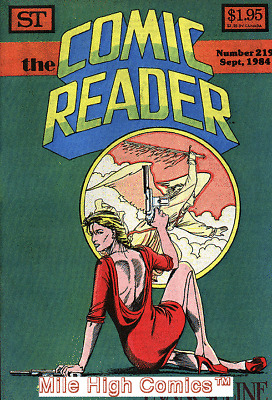
While the JLA/Avengers project was slowly falling apart, Shooter was actively involved in what would become the biggest Marvel project to date. Marvel Age #11 (February 1984) broke the story of “Cosmic Champions,” a 12-part mega-crossover, set entirely within the confines of the Marvel Universe and written by Jim Shooter! By the next issue of Marvel Age, the project was cover-featured under its new name — Marvel Super Heroes Secret Wars!
Tom DeFalco: “There really wasn’t any correlation between Secret Wars and JLA/Avengers. There were never any discussions about doing one over another. Secret Wars happened because Mattel was doing a toy line of our characters and they wanted a comic book to support the toys. It never occurred to us that Secret Wars was going to be the big deal that it ended up being. It was just a toy tie-in. It ended up being Marvel’s first million-seller — about 3 to 4 times the sales of any of the Marvel/DC crossovers.” –2004 interview
However, the announcement of Secret Wars fueled speculation that Marvel was only interested in doing future mega-crossovers with their own characters.
Mike Carlin: “The feeling at Marvel was definitely ‘Hey! We don’t need those other guys to do big crossover stunts. Why should we help them? Screw ‘em — we’re better. We know how to do this.’” –2004 interview
Tom DeFalco: “Sure, that attitude was around. Marvel had much better sales than DC at that point. We were basically doing the crossovers for PR and additional revenue. We knew that by doing the crossovers, we were exposing the DC characters to a wider audience.” –2004 interview
DC’s next big thing was what became Crisis on Infinite Earths. It began in 1985, although it had been in the planning stages for several years (long before Secret Wars). Fresh from not doing JLA/Avengers were artists George Pérez and Dick Giordano (although Giordano would have to drop out after a few issues). Editor Len Wein coordinated the whole thing and Marv Wolfman (the only non-JLA/Avengers guy on the team) wrote it. This project kick-started relaunches for many of the major DC characters — most notably Superman in 1986. With these projects, and more, DC probably realized that they didn’t need the other guys either.
Marvel and DC wouldn’t team up again for any cross-company comics until 1995. By that time the nature of the comic book business had changed once again, and a period of cooperation between the two publishing giants existed, at least for a short time. (Or, as more cynical observers noted, “sales were down — time for crossovers!”) Most of the players had changed as well. Both Shooter and Giordano were gone, moving on to different destinies.
The crash and burn of the JLA/Avengers project was a difficult lesson. Mistakes were made — George Pérez obviously should have never been given a “go” by DC before getting Marvel’s approval of the plot in writing. But the actual problems may not have been the hard-and-fast rules or contractual demands as much as a breakdown based upon two completely opposed editorial styles. In a recent article in Back Issue #1, Michael Eury explains:
“Dick Giordano was a ‘non-interference’ editor at Charlton Comics in the 1960s and during two later staff stints at DC and maintained that laid-back approach once he rose to DC’s top editorial chair. Dick preferred to select the right people for the job, then step back and let them work their magic. This succeeded more often than not, but when it didn’t — when a firm or disciplinary hand was needed — then problems could and did arise. Len Wein was similarly casual in his editorial style.
“Jim Shooter was Giordano’s polar opposite. Cutting his teeth in the 1960s as a writer under the tutelage of taskmaster editor Mort Weisinger, teenaged Jim was groomed to control with an iron hand. Under his 1980s post as Marvel’s editor-in-chief, the company experienced numerous creative and sales successes, but it was always clear that autocratic Shooter was the boss, that his word was final. Some folks had no problems following his direction, others did and resented him for it.
“These two editorial camps were incompatible. It was the ultimate DC vs. Marvel battle.”
One last timeline entry…

That same day, George Pérez sends a note to Dick Giordano reminding him he still wants to do JLA/Avengers.
In the almost 20 years since the original project fell apart, either Marvel or DC would occasionally make tentative proposals to the other for a continuation of cross-company crossovers (with JLA/Avengers by George Pérez always high on the list). But one stumbling block or another always caused the negotiations to break down. Tom DeFalco indicates that from Marvel’s side, corporate owners would frequently dictate that Marvel concentrate on its own projects and not those of competitors.
It takes until 2002 for Marvel and DC (and several different editorial regimes) to get it together, but George Pérez completed the last pages of the 2003/2004 version of JLA/Avengers in February 2004.
Sometimes the dream doesn’t die.
–KC Carlson
March 2004
Images of Pérez’s unfinished pages in this article come from Heritage Auctions and the blog of Tom Brevoort. Brevoort also posted Gerry Conway’s full original plot for the crossover earlier this year.


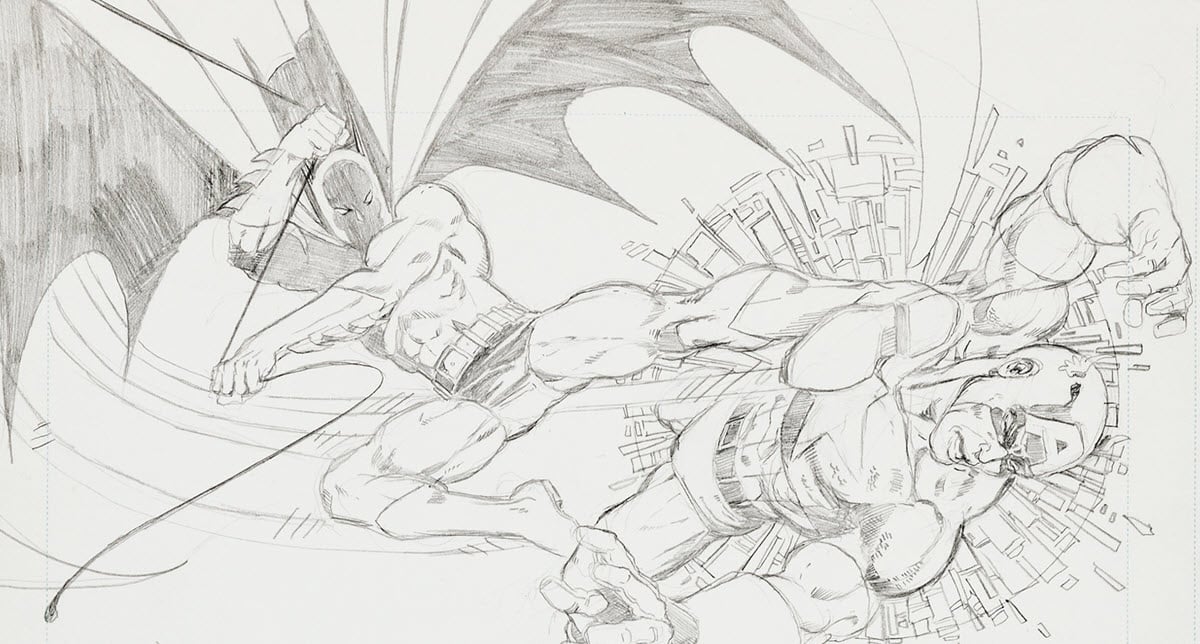
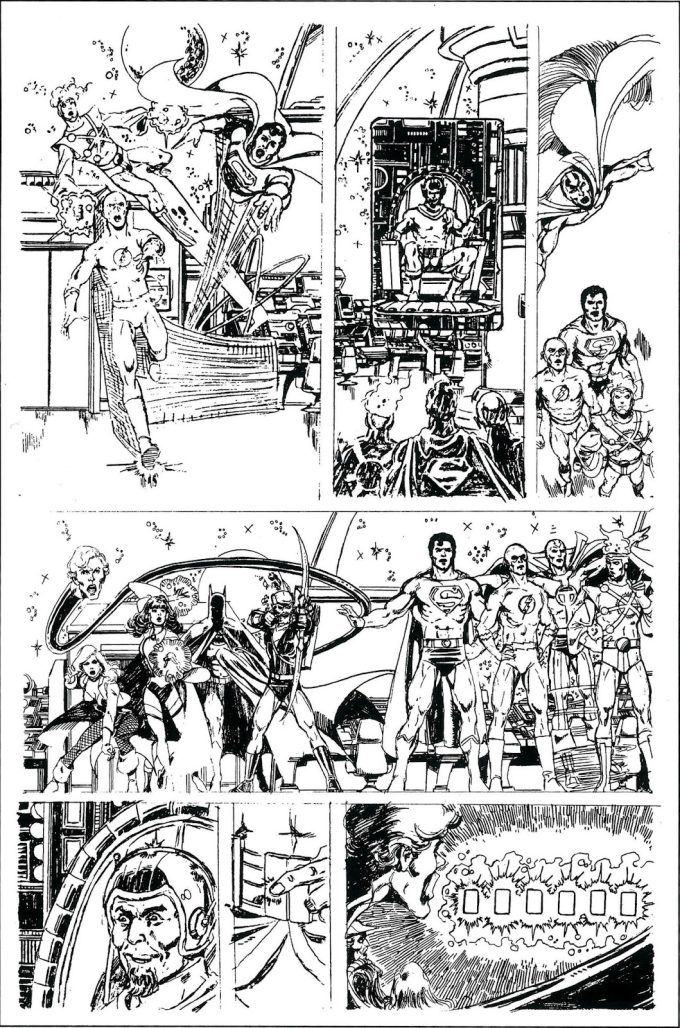
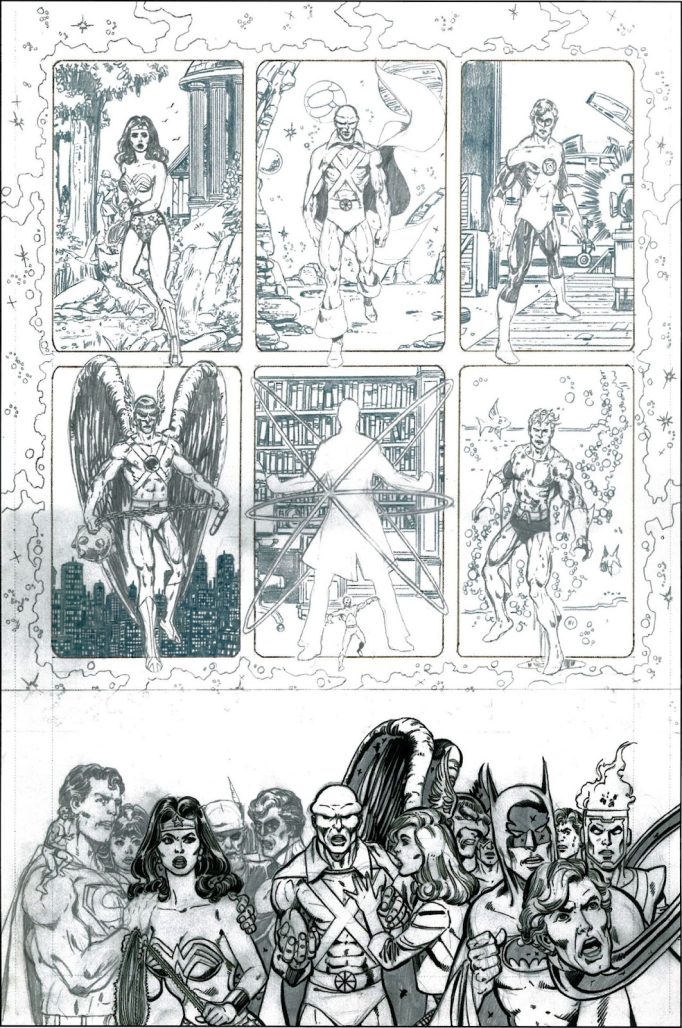
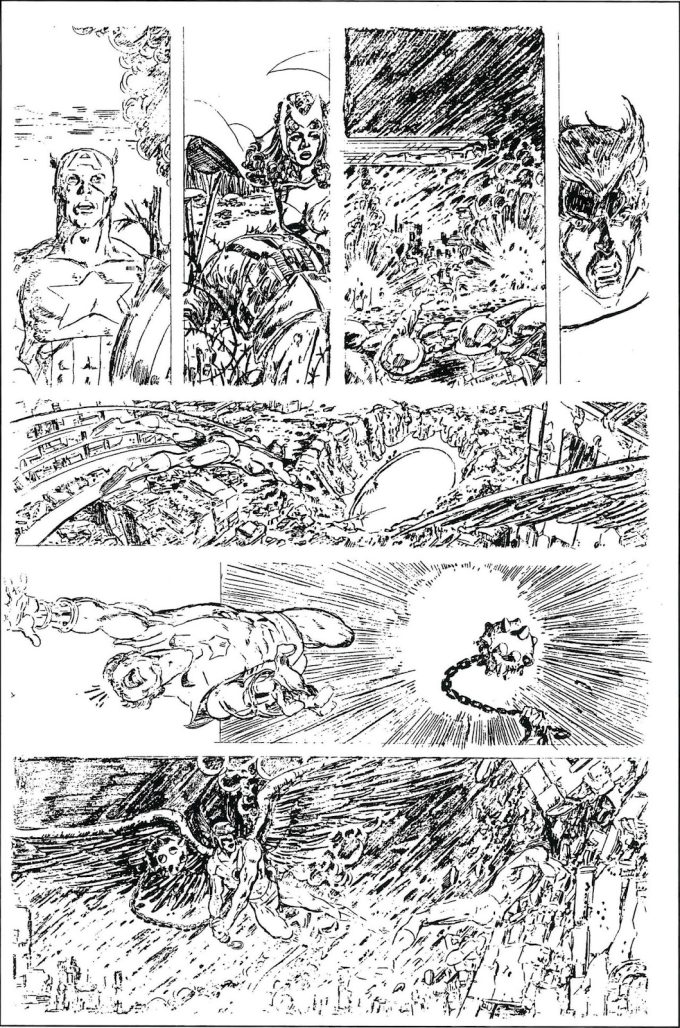
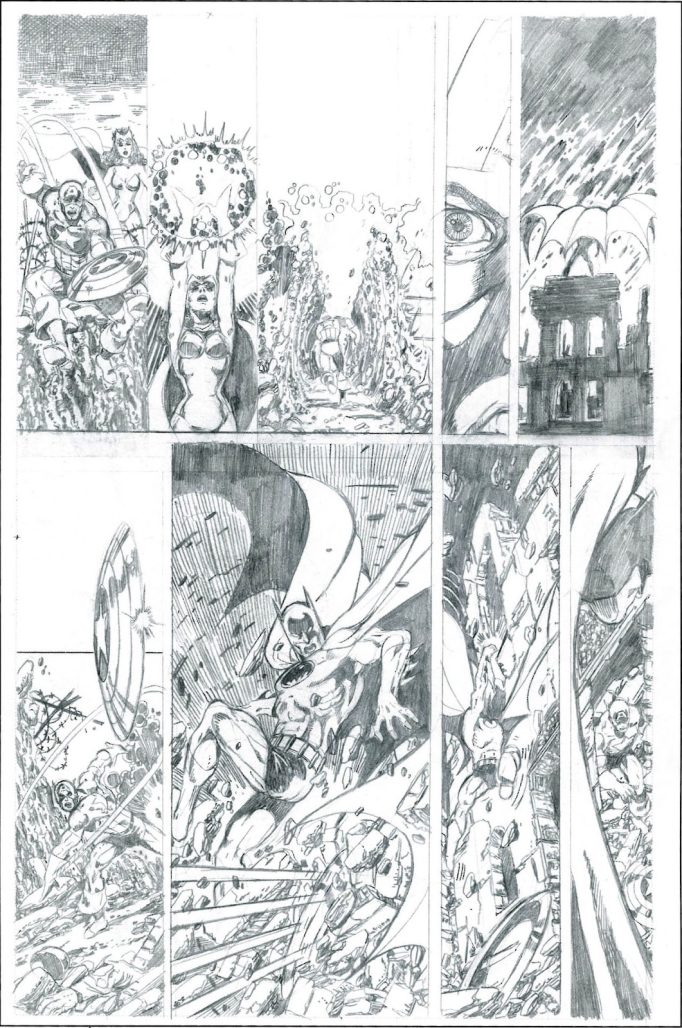
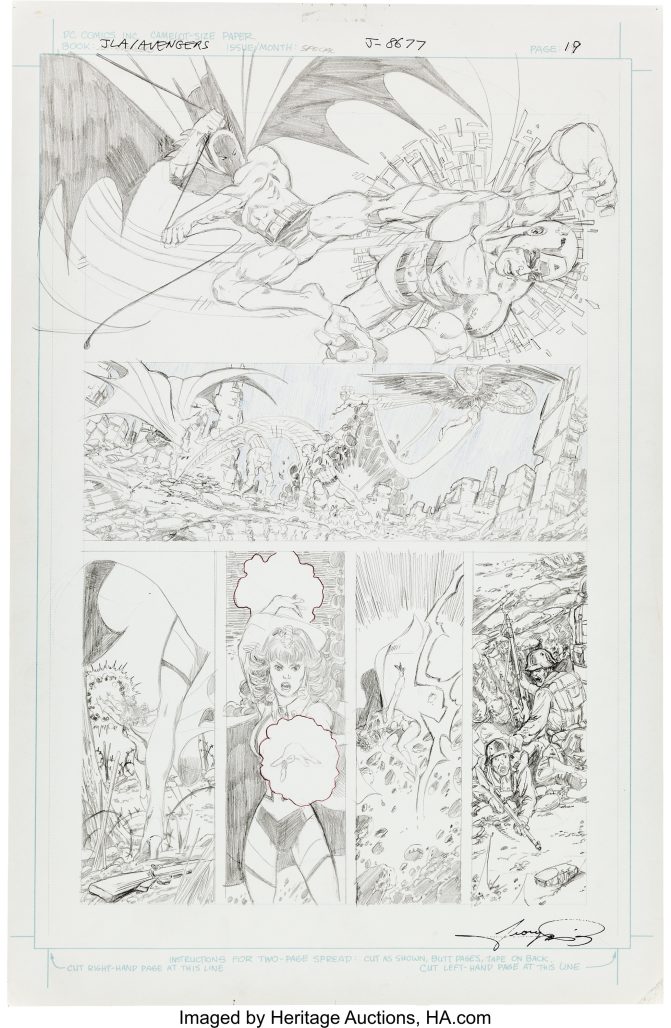
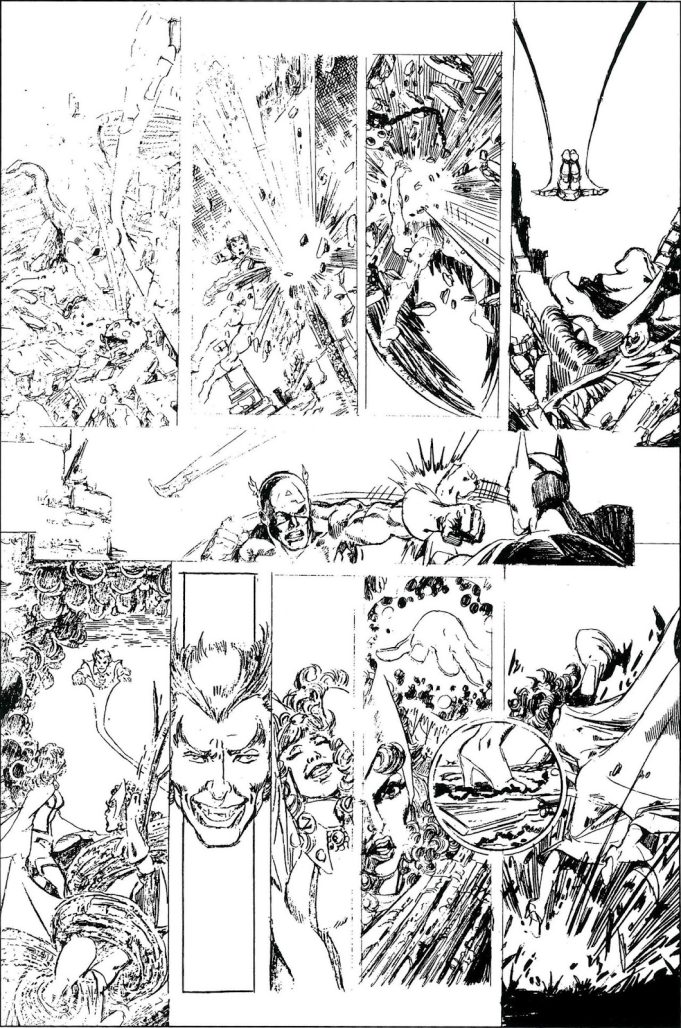
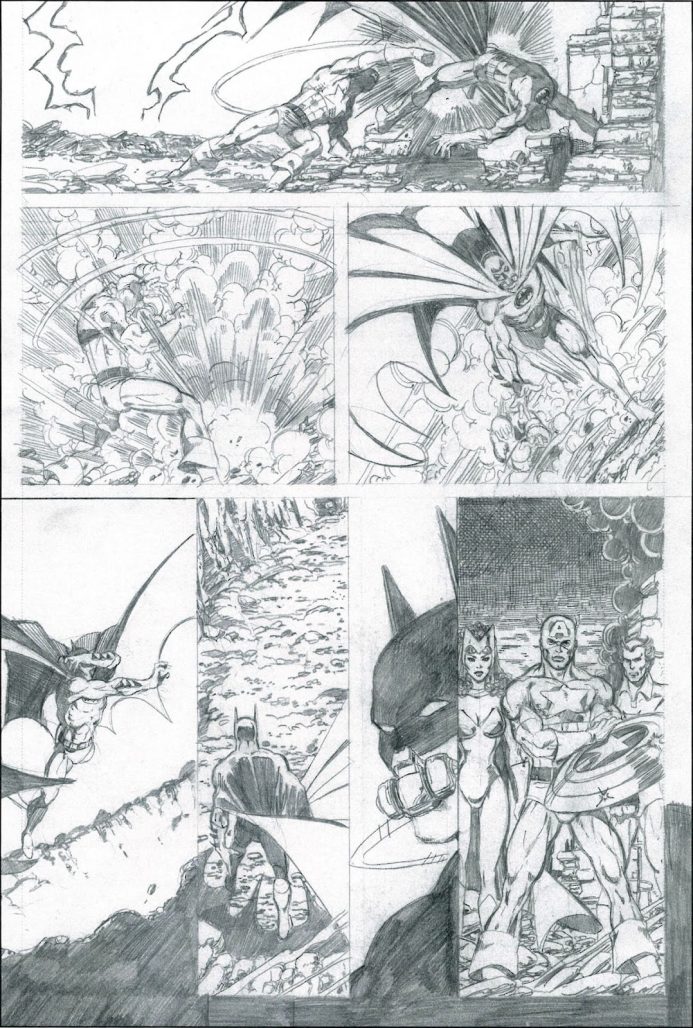


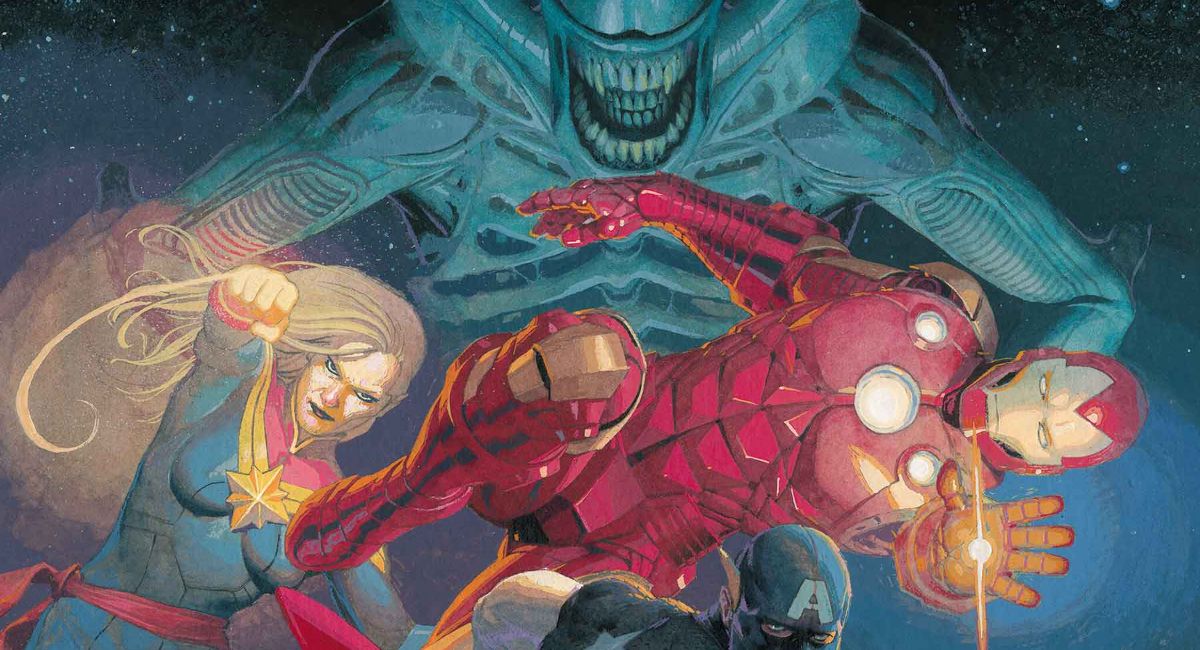



Don’t know how good this might have been but Perez’s pencils look great. Obviously the time wasn’t right. It happened eventually and I loved it, although it did sort of remind me of a “Crisis” type story it did what it needed to do. And that final cover with Superman holding Cap’s shield and Thor’s hammer blew me away, it seemed so right and beyond inter company politics.
I’ve suspected the reason this was killed was due to Shooter thinking it would help DC more than it would help Marvel. When the crossovers first started both Marvel and DC weren’t doing that well sales wise. Comic By 1982 Marvel was doing a lot better, DC I think was still hurting with a few exceptions. One of them was Teen Titans and they may have felt that the X-Men crossover with Teen Titans was part of the reason why it was selling so well. I wouldn’t be surprised if they felt Justice League would also benefit from the exposure from now much larger base of Marvel ‘zombies’, but Marvel’s benefit would be small. So once Shooter heard that George would walk if he didn’t approve the new plot soon, he waited until after George had left to give the approval.
I wish there’d be more undiscussed elements of comics history covered in this excellent fashion. What Gruenwald and Macchio did to the first female Captain Marvel (Monica Rambeau) and how Len Wein and Marv Wolfman sold hundreds of stolen original art from Marvel in 69-72 at conventions and how they obtained it.
Comments are closed.